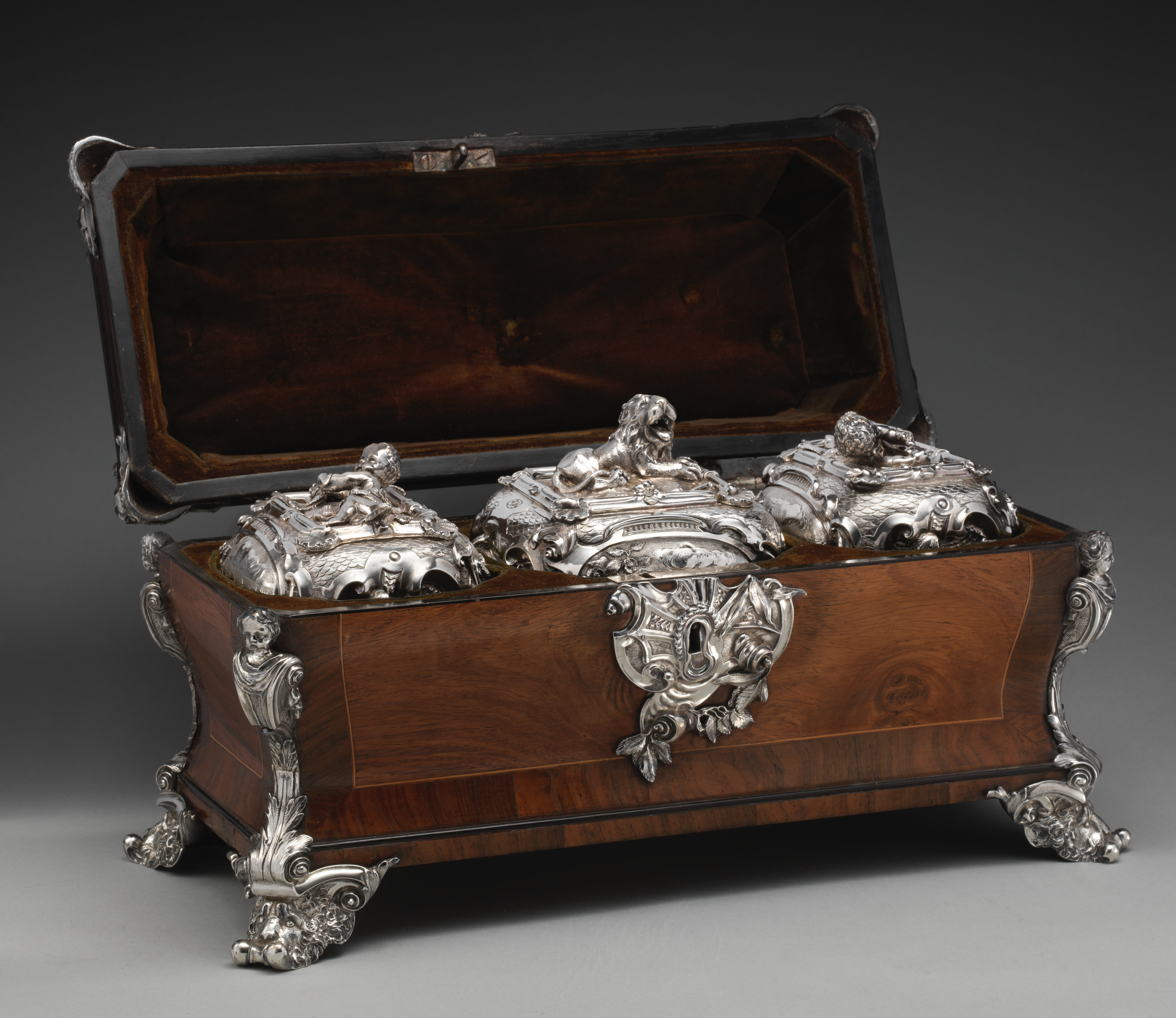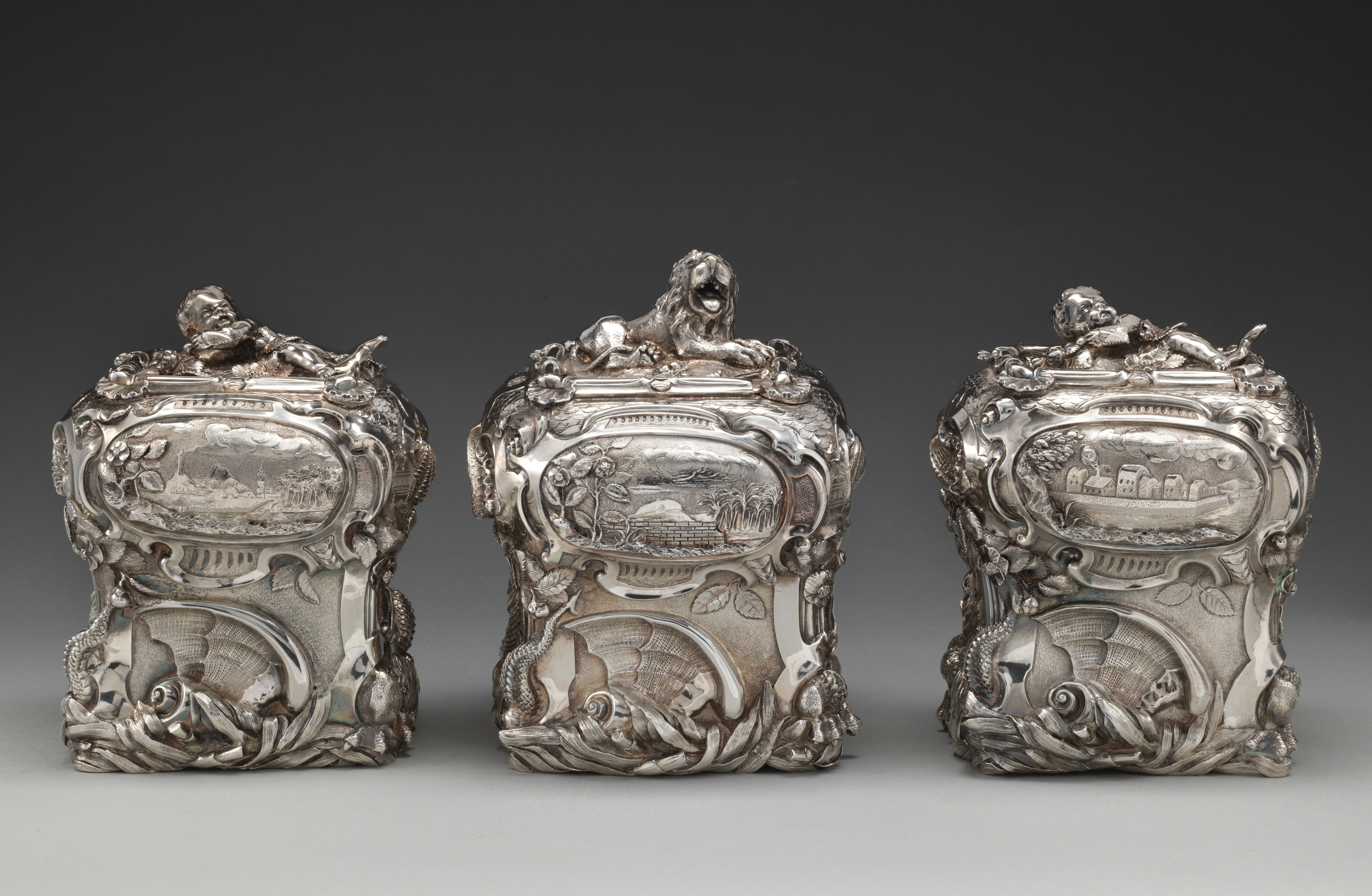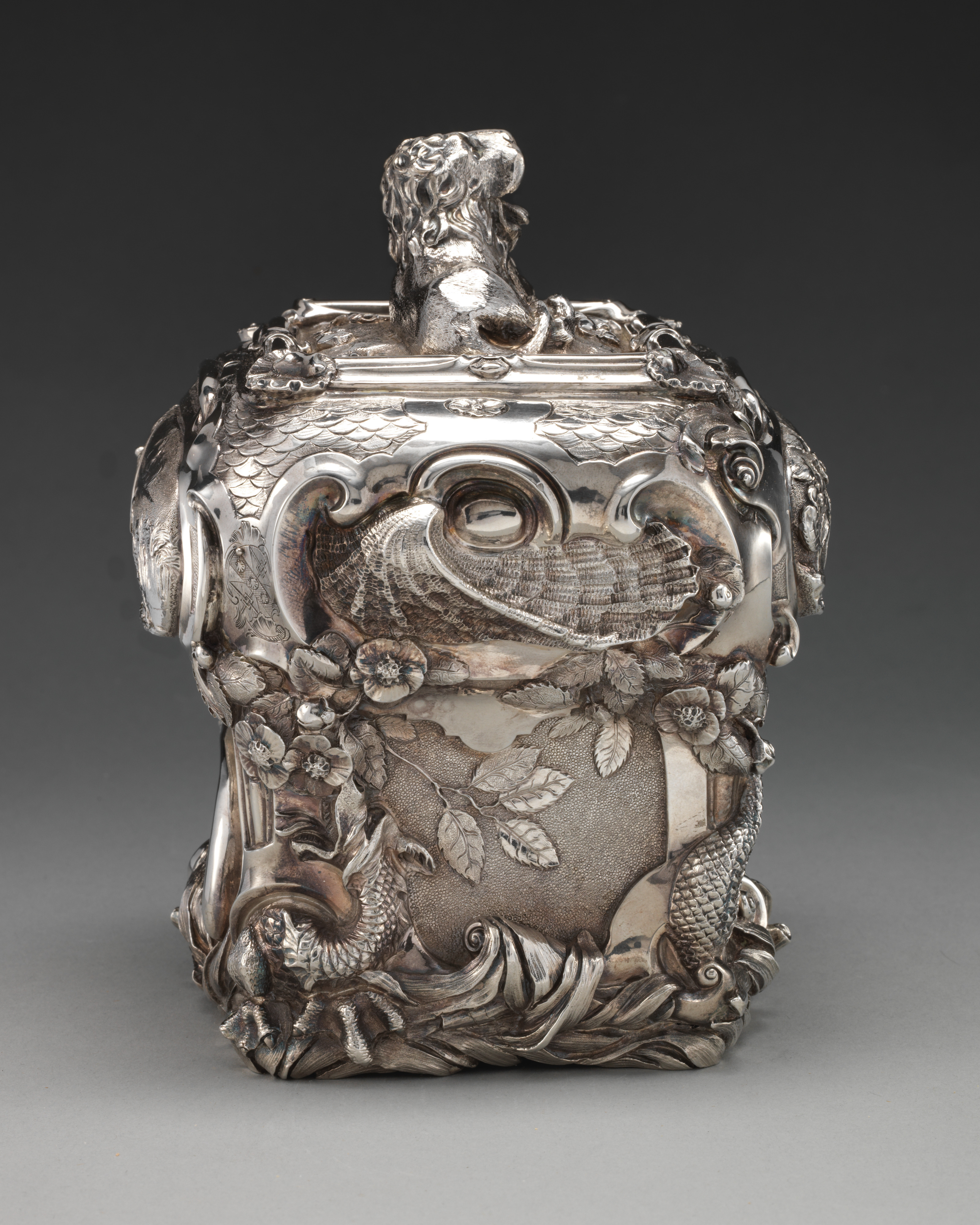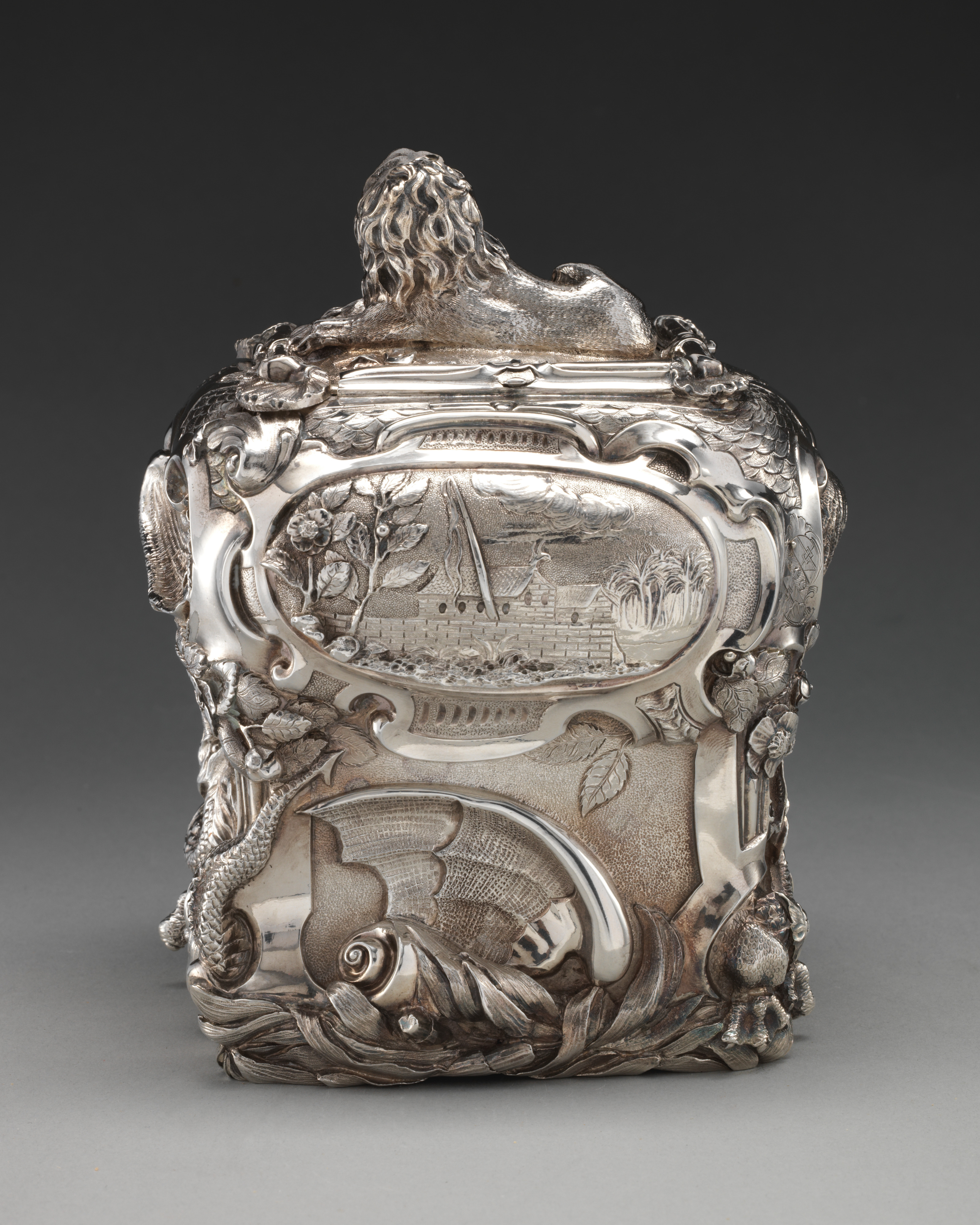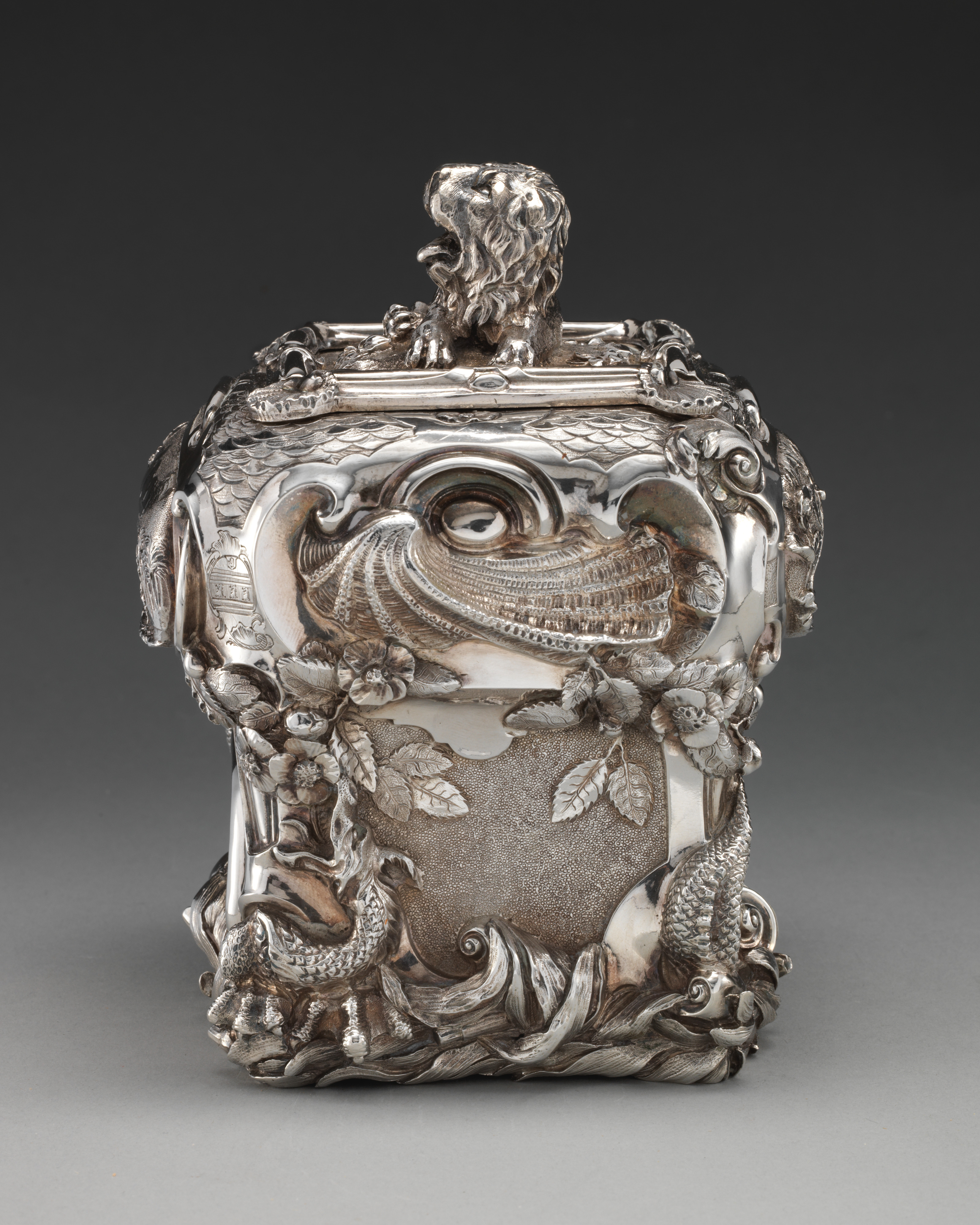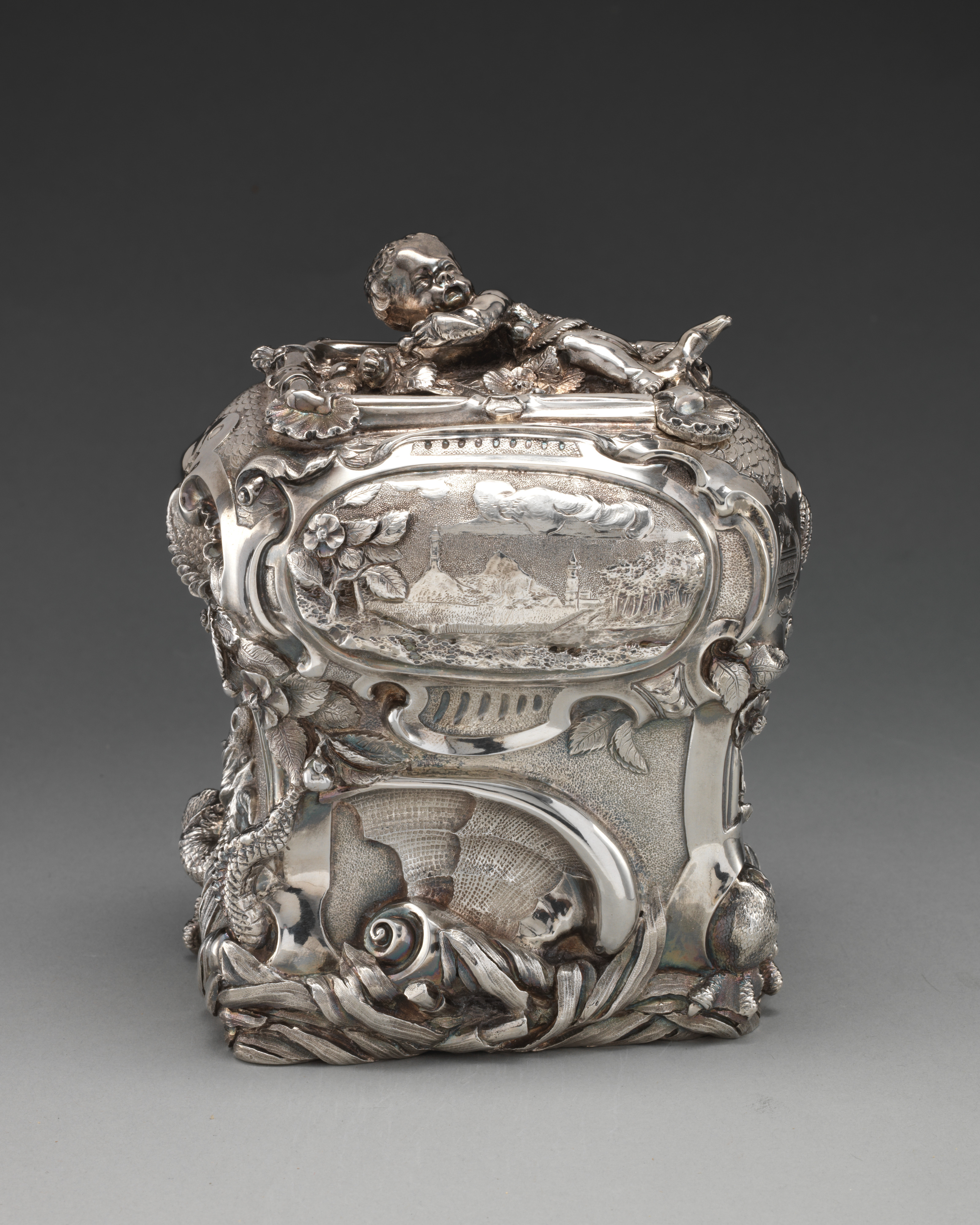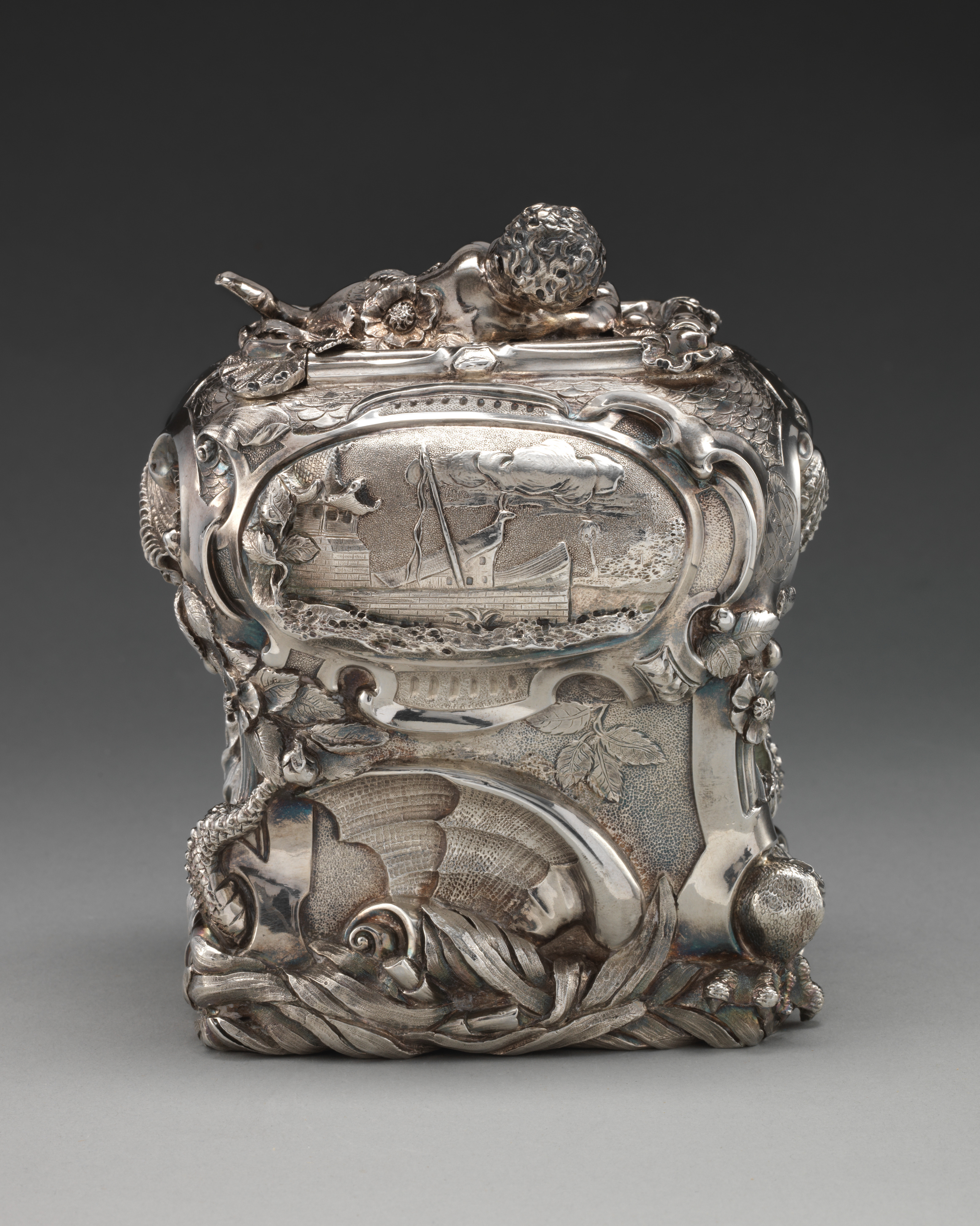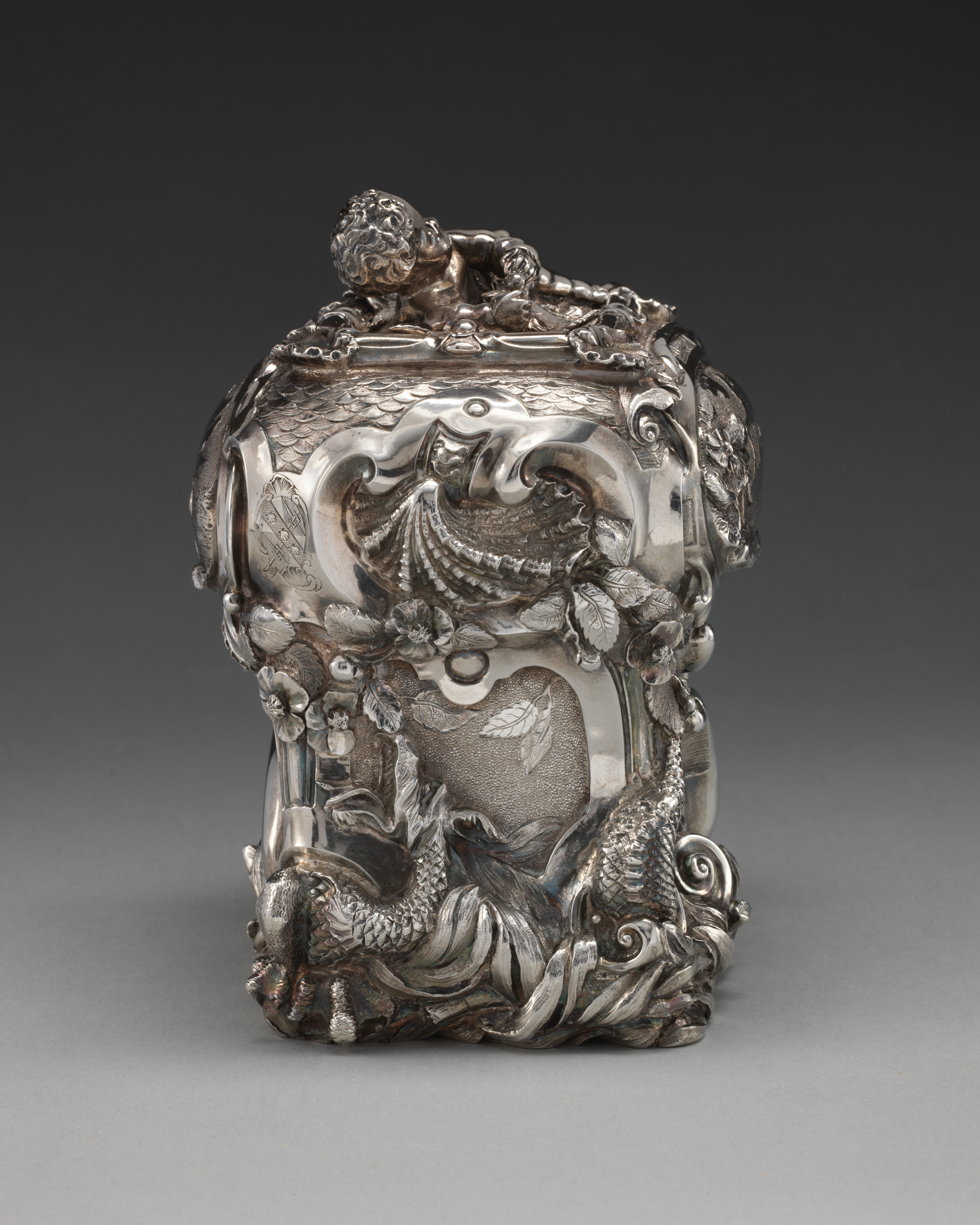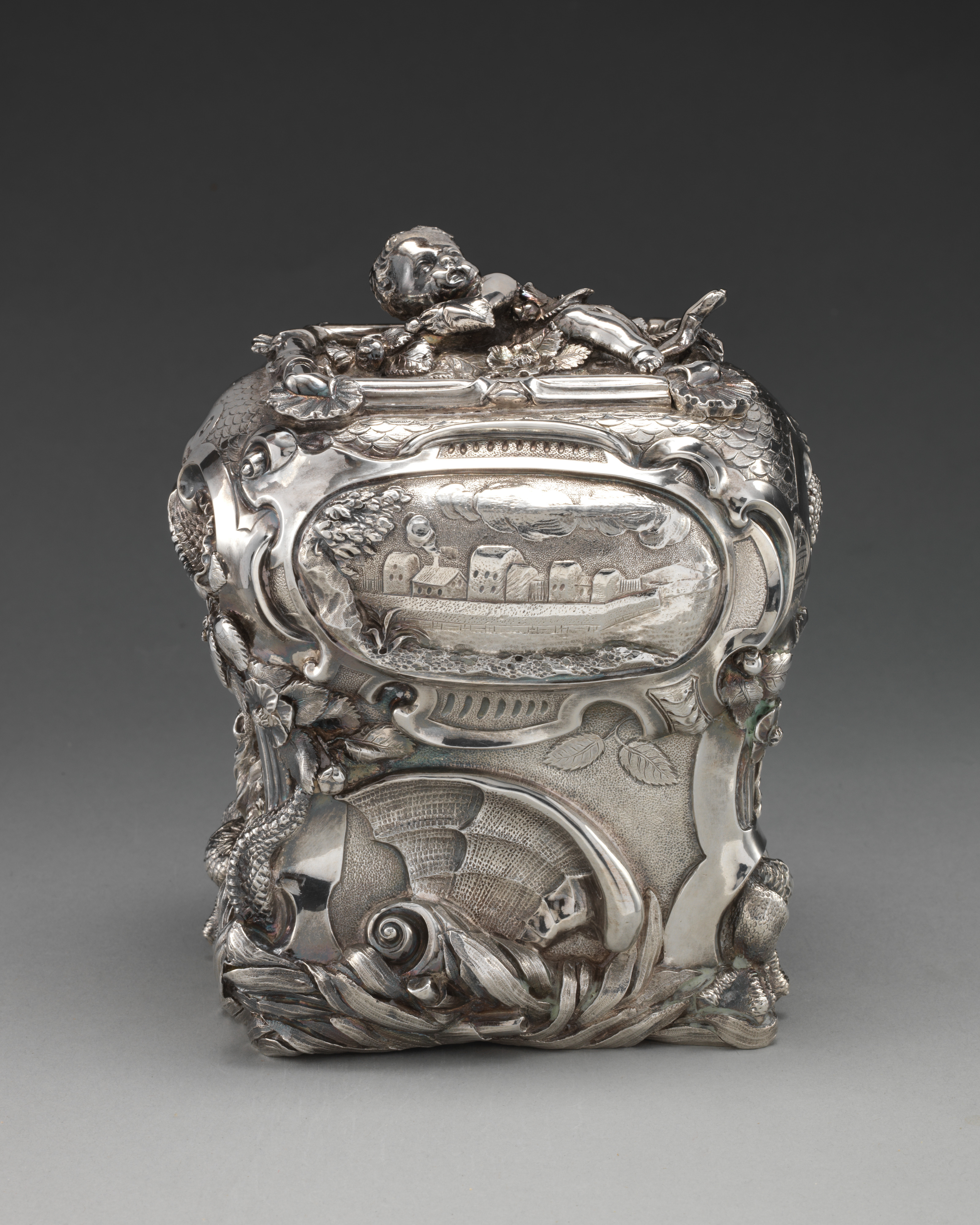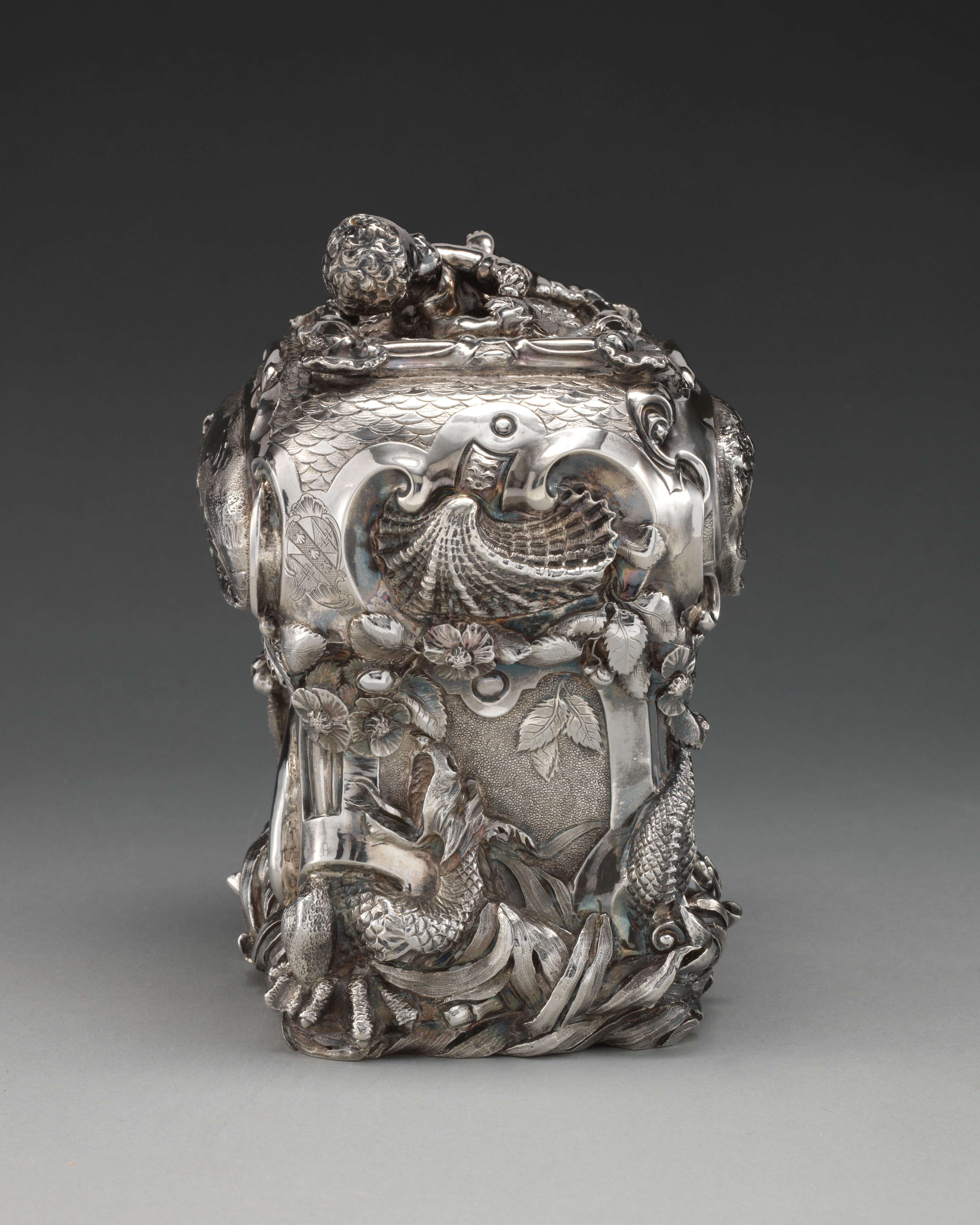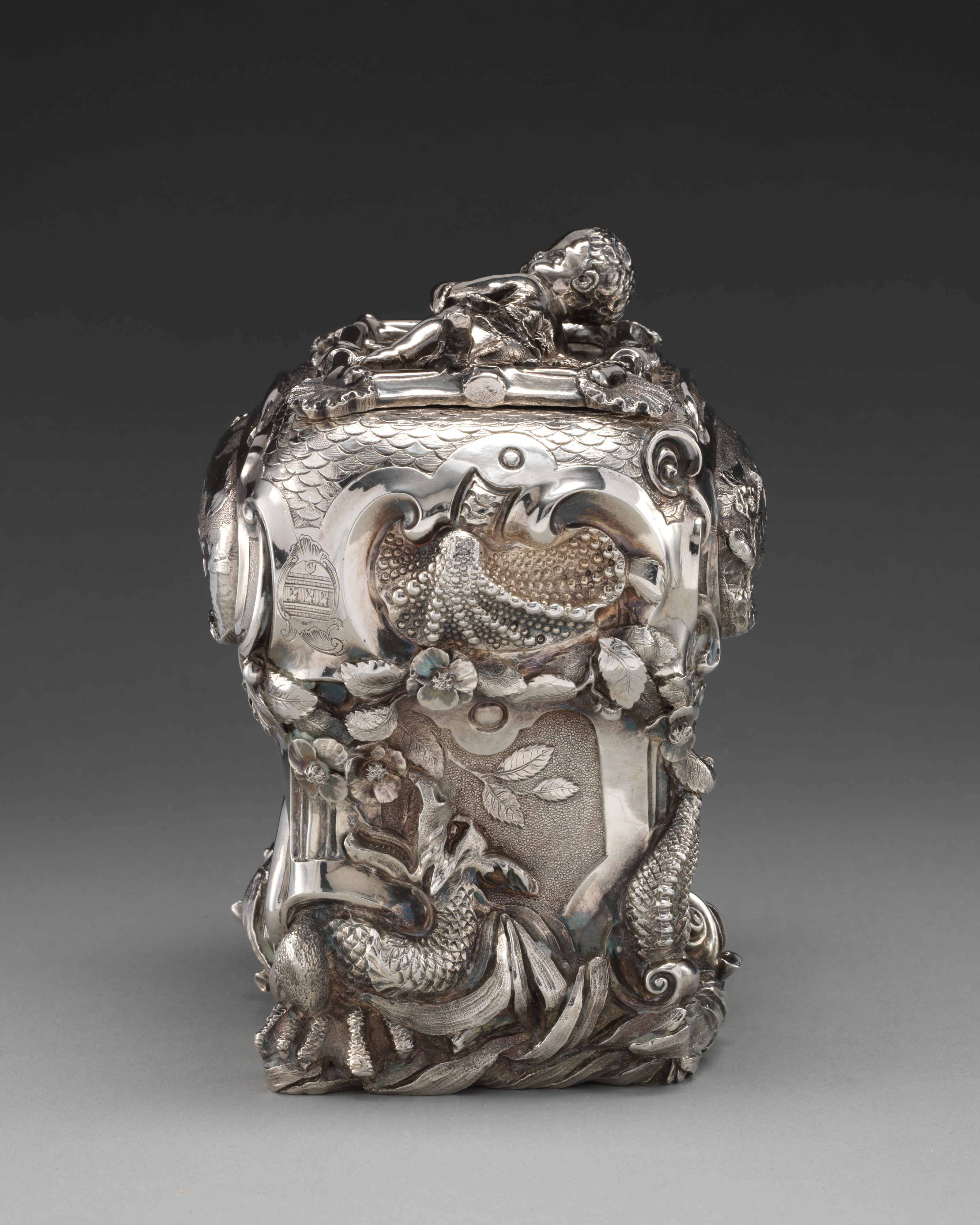Pair of tea caddies and a sugar box in a case
Paul de Lamerie British
This set of two tea caddies and one sugar box, each oblong with a bombé top featuring oval cartouches with chased and engraved land- city- and seascapes, in their velvet-lined rosewood case embody the apogee of Paul de Lamerie’s work. All three containers are engraved with the Dashwood coat-of-arms and entirely covered in ornament: the caddies and sugar box are partly raised and cast, and finely chased with tea leaves and flowers; each base is enveloped by a sea creature of which the claws, heads and wings are entangled in ornamental trophies of shells, bands and abstract undulations. The sliding lids of the caddies topped with a putto each, the sugar box with a reclining lion.
A unique survival, the set bears the arms of the English Tory politician Sir James Dashwood, 2nd Bt (1715–1779) and his wife Elizabeth Spencer, and was likely commissioned to mark their nuptials in 1738. Indeed, the object’s level of sophistication hints at the fact that we must be looking at a special commission rather than a piece made for stock upon which subsequently could be engraved the arms of the acquirer.
Paul de Lamerie ranks amongst the most significant, prolific and inventive silversmiths of early Georgian England. He was born in the Low Countries in 1688, the son of Huguenot emigres, and moved to London with his family shortly after the installation of King William III. Appointed goldsmith to George I in 1716, Lamerie would advance to become one of the most successful suppliers of silver to the British aristocracy as well as foreign rulers, such as Catherine the Great of Russia and Joao V of Portugal.
Sir James Dashwood, for whom the present tea caddies were made, inherited a vast fortune from his grandfather, Sir Robert Dashwood, 1st Bt in 1734. In 1738, he became High Sheriff of Oxfordshire and married Elizabeth Spencer. This alliance with one of the most distinguished families in England (which produced the dukes of Marlborough and later the earls Spencer) cemented Dashwood’s social standing. In 1742, Dashwood began the erection of Kirtlinton Park, of which the dining room was moved to the Metropolitan Museum in 1931 (32.53.1).
The caddies and the room are reflections of Dashwood’s significant wealth as well as of his extraordinary social and artistic ambitions. As domestic objects of the finest quality of which the form pushes the boundaries of Rococo imagination while illustrating the commodities gained through Empire, the caddies encapsulate the overarching theme of the Met’s new British Galleries, focusing on the resourcefulness of Britain’s entrepreneurial society and its international trade.
#406. Trade and Empire
This image cannot be enlarged, viewed at full screen, or downloaded.
This artwork is meant to be viewed from right to left. Scroll left to view more.


